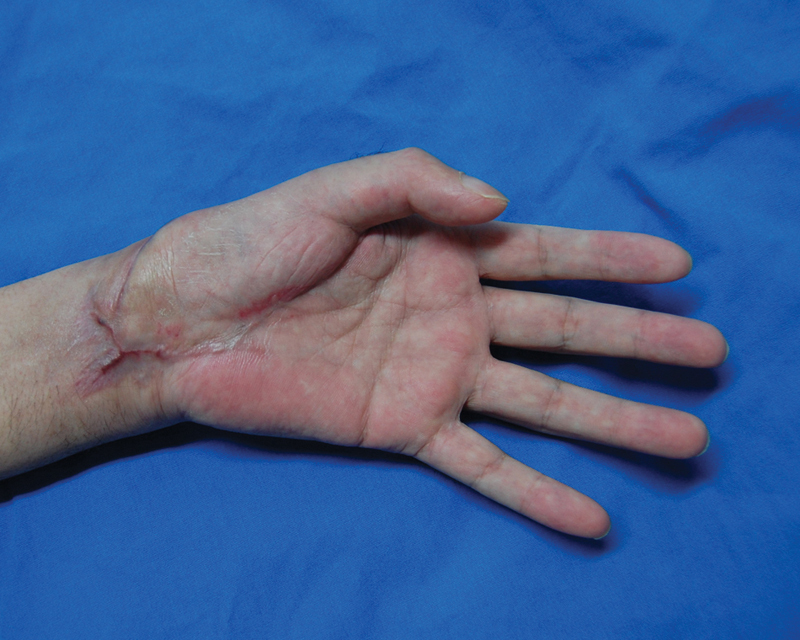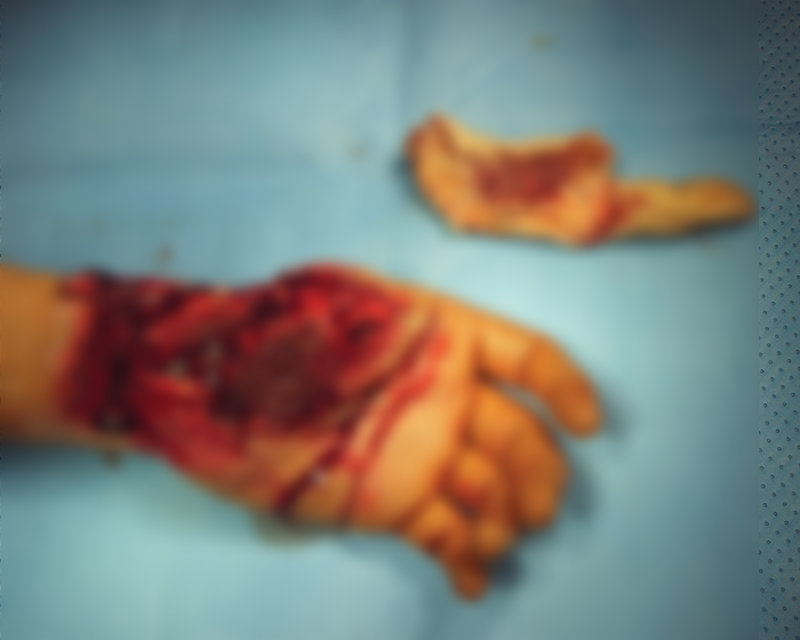Amputated thumb by an electrical saw
A 44-year-old male presented to our department with an amputated thumb with radial part of the hand (Fig. 1). His injury was occurred by an electrical saw. The index finger circulation was intact. The margins of both the parts were crushed and severely damaged. Under general anesthesia and tourniquet control, they explored the wound. After thorough debridement, bone was fixed using K-wires.
We found that the main radial artery was not damaged. Therefore, we attempted to identify the SPBRA on the thenar area of the amputated thumb, and it was found intact with its venae comitantes (Fig. 2).
They followed the standard postoperative protocol for replantation. K- wires were removed after 4 weeks.
After 4 months of replantation, the patient was followed up for functional outcome. There was 15-degree extension lag at interphalangeal (IP) and metacarpophalangeal (MCP) joints, and range of movement was measured 15 to 45 degrees at IP and 15 to 40 degrees at MCP joint (Fig. 3).

Credit: Dr. Hyun Chul Park, MD Institute of Micro and Hand Surgery, Duson Hospital.

